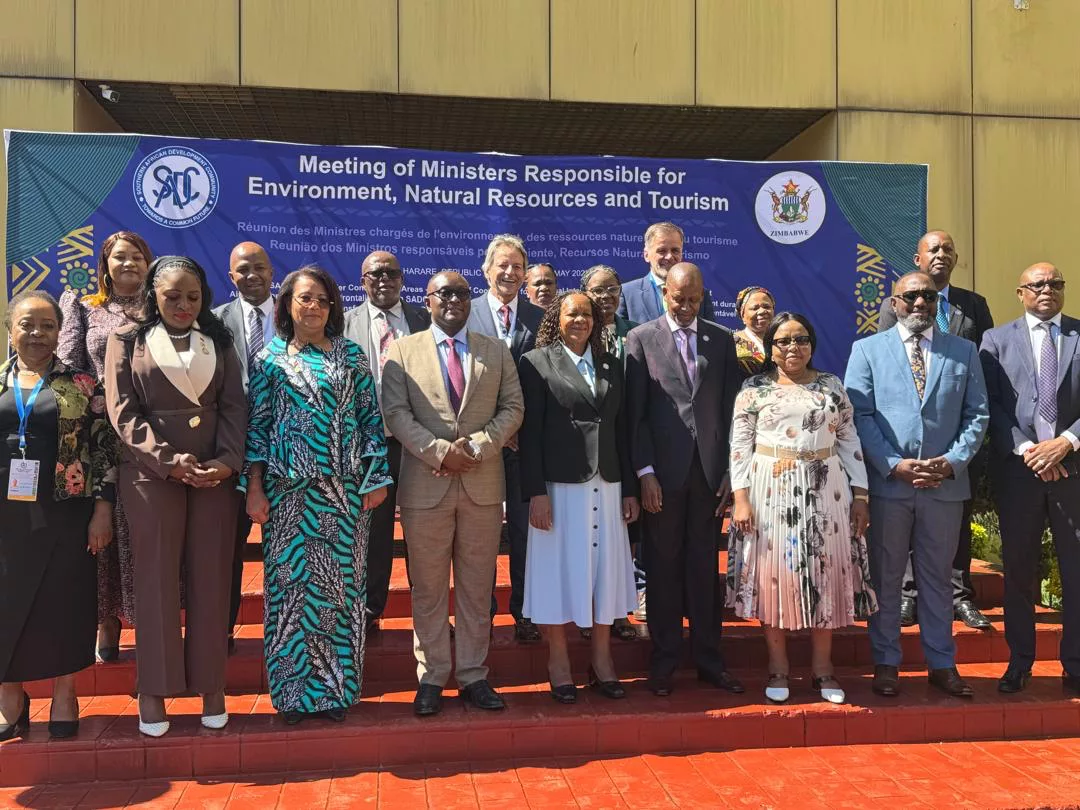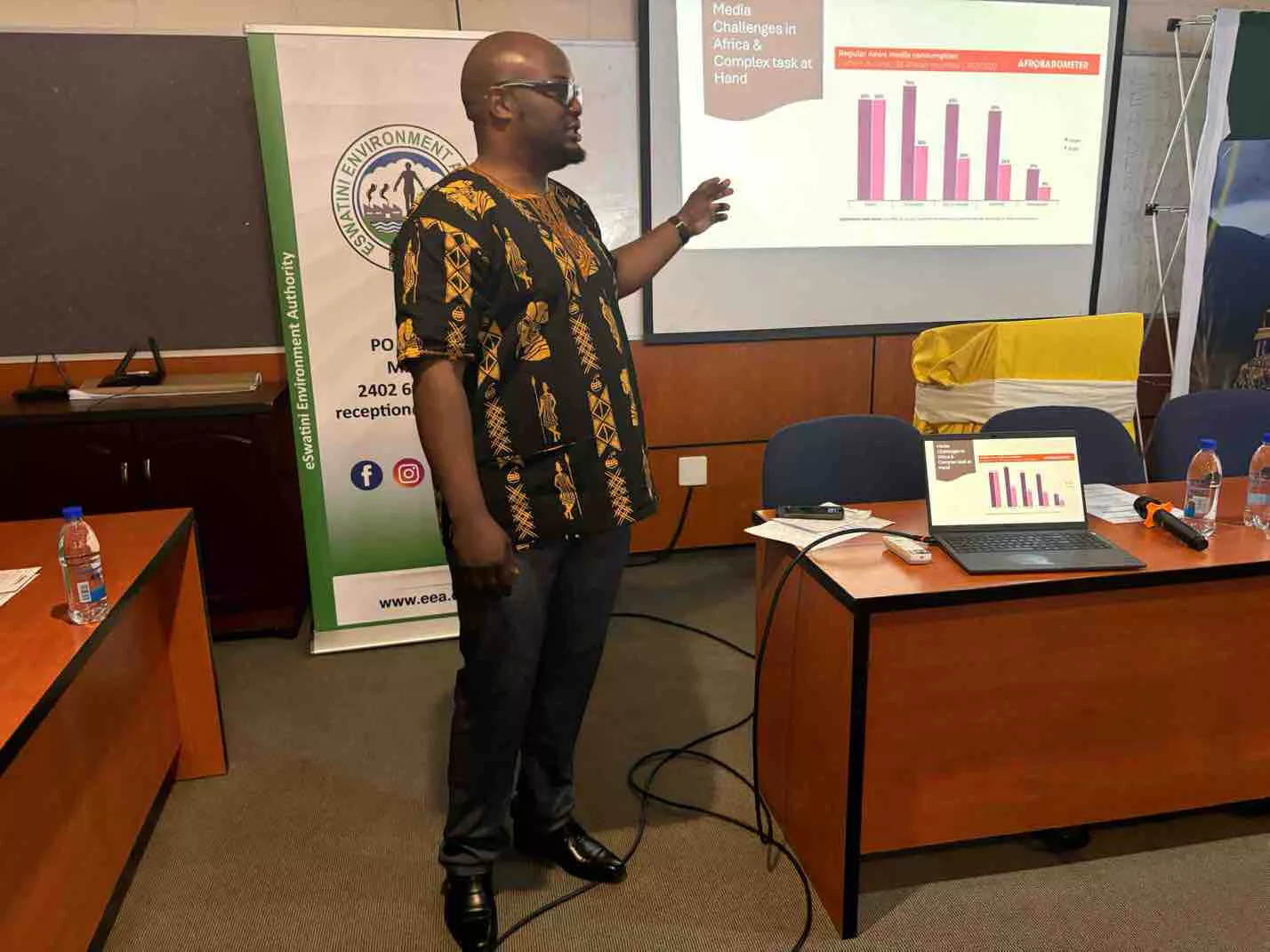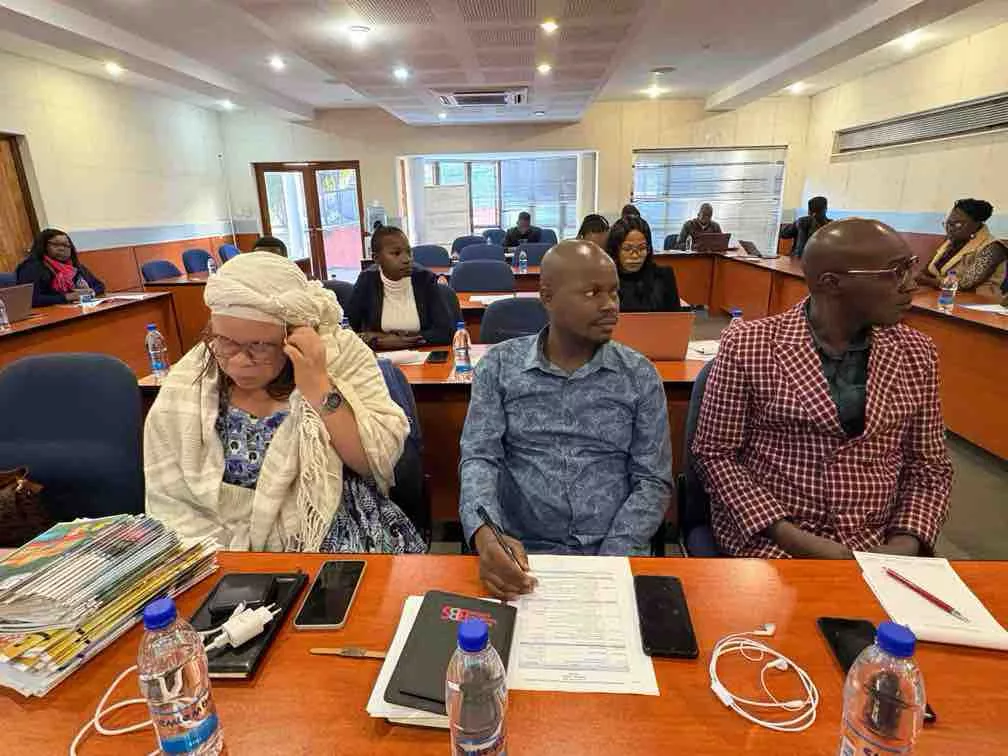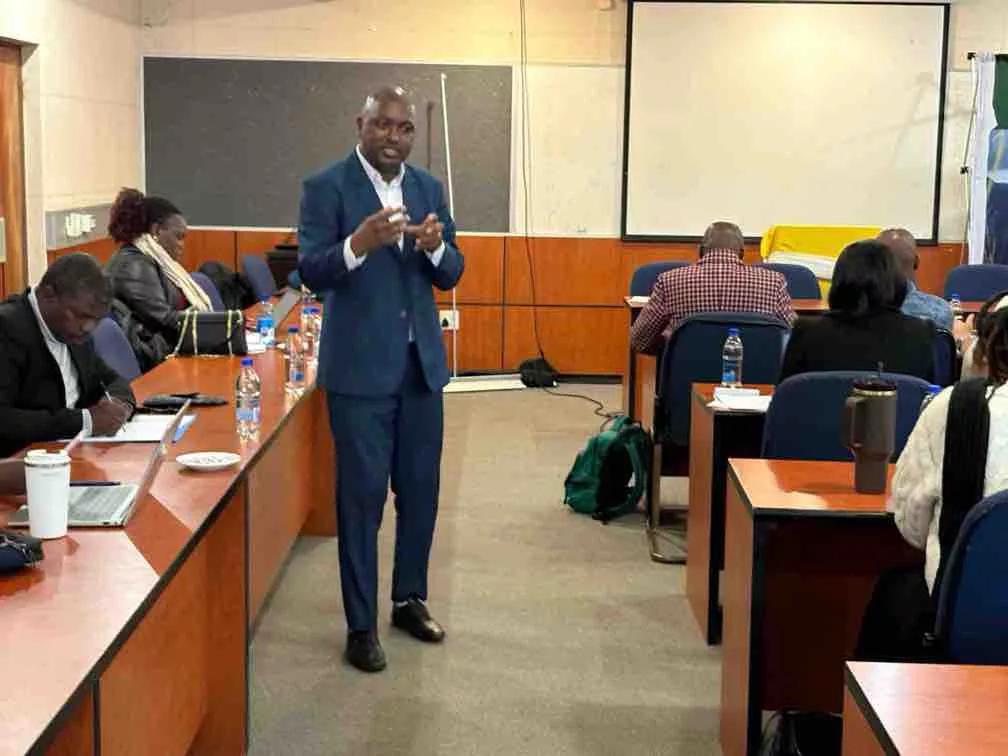|
Getting your Trinity Audio player ready...
|
Zimbabwe convened a meeting of the Ministers responsible for Environment, Natural Resources, and Tourism on the sidelines of the historic inaugural SADC Transfrontier Conservation Areas (TFCA) Conference and Summit as a testament to the southern region’s commitment to conservation, sustainable development, and regional integration.
These sentiments were captured in the remarks by the Minister of Environment, Climate, and Wildlife, Hon Dr. Evelyn Ndlovu at the meeting of the SADC ministers responsible for environment, natural resources, and tourism held today at the Rainbow Towers Hotel in Harare.
The meeting focused on the performance of the wildlife sector, especially in the implementation of conservation programmes and the sustainable use of natural resources. In the wake of the upcoming 20th Convention on International Trade in Endangered Species of Wild Fauna and Flora (CITES), CoP, the minister said there is a need for engagements to be focused, as stakeholders navigate the delicate balance between conservation imperatives, community livelihoods and sustainable development.
It also focused on the forestry sector, whose sustainable management remains critical for climate resilience, rural development, and ecosystem services; as well as the tourism sector, which stands as one of the region’s most promising engines of green growth, cultural exchange, and job creation.
In addition to reviewing sectoral performance, the agenda includes critical strategic matters. Of particular note is the progress in the implementation of SADC’s environmental protocols and strategies, which provide the policy scaffolding for transboundary resource governance, environmental protection, and sustainable development. Moreover, there is optimism to reflections from the SADC First Ladies’ Forum on Environment, whose leadership and advocacy have become instrumental in mobilizing communities, raising awareness, and championing inclusive environmental action across our region.
In his remarks, the SADC Executive Secretary, HE Mr. Elias M. Magosi said the meeting was timely in that it coincides with the celebration of 25 years of cooperation in implementing the Transfrontier Conservation Areas (TFCAs) in the SADC region.
During this period, the region has grown from a single park to a network of 13 TFCAs, covering nearly one million square kilometres across the region. The TFCAs now include more than half of all protected areas within SADC, cementing the shared vision that wildlife and natural ecosystems transcend political boundaries and societies.
The Kavango–Zambezi (KAZA) TFCA alone spans approximately 520,000 km² across five countries, Angola, Botswana, Namibia, Zambia, and Zimbabwe, making it one of the largest conservation areas in the world. According to the 2023 KAZA Elephant Survey, this TFCA is home to over 220,000 elephants, which is more than half of Africa’s remaining savanna elephants. This is a testament to SADC’s bold transboundary conservation vision and prudent use of its natural resources.
He said wildlife conservation is critical, not only for ecosystems but also for the livelihoods of communities through tourism and conservation-driven industries. In 2019, the wildlife economy was estimated to be USD 31.5 billion, contributing about 4.6% of SADC’s GDP. Today’s meeting assessed progress in implementing key regional strategies and instruments that promote effective conservation and sustainable use of wildlife, as stakeholders continue their efforts to improve the livelihoods of communities and drive sustainable development of the region.
HE Magosi said Southern Africa remains a global stronghold for wildlife, home to some of the largest populations of elephants and rhinos. Botswana alone hosts approximately 130,000 elephants, representing roughly one-third of Africa’s remaining elephant population, while Zimbabwe is home to about 100,000 of these majestic animals.
Thanks to the dedicated conservation efforts of Member States, Africa’s black rhino population has increased from 2,400 animals in 1995 to over 6,400 today. The region is also home to nearly 23,000 black and white rhinos, which represent over 90% of the world’s total rhino population, currently estimated at approximately 23,900 animals, solidifying Southern Africa’s crucial role in global rhino conservation. These are but snippets of the collective efforts to ensure and sustain the conservation of some endangered species.
The SADC Executive Secretary said despite these remarkable achievements, challenges beyond climate change continue to persist, particularly poaching and illegal wildlife trade. Elephant poaching peaked in 2011, with an estimated 25,000 elephants killed across Africa that year, representing the highest level of poaching in recent history. Although poaching has declined somewhat in recent years, levels remain disturbingly high in parts of Southern Africa. In South Africa’s Kruger National Park alone, 32 elephants were poached in the 2022/23 period—more than triple the figure from the previous year.
Meanwhile, countries like Mozambique and Zimbabwe have reported significant progress, with Mozambique’s Niassa Reserve recording zero elephant poaching incidents since 2018, and Zimbabwe reducing its national elephant poaching cases to 25 in 2022. Despite these gains, the threat to elephant populations persists in high-risk areas, underscoring the need for sustained vigilance and regional collaboration.
He said forests are a critical natural asset for the SADC region, covering about 41% of the region’s land area and playing a vital role in supporting biodiversity, livelihoods, and economic growth. Specifically, the Miombo and Mopane woodlands, which stretch across much of the SADC region, provide a source of livelihood for approximately 100 million people in rural communities who rely on these forests for food, fuelwood, medicine, and cultural practices.
Additionally, nearly 79 million people across the region depend on forestry in general for fuelwood and timber, contributing significantly to local economies. On average, SADC loses 0.6% of its forest cover annually. To address this, the region is implementing collective measures to conserve forests and reduce deforestation, in line with the SADC Protocol on Forestry (2002), which is the region’s instrument for sustainable forest management. Additionally, innovative solutions, such as community-based forest management, agroforestry, and strong law enforcement against illegal logging, are measures to address the delicate balance between development needs and conservation. The annual International Day of Forests is, therefore, pivotal in raising awareness of the importance of forests in sustaining livelihoods, enhancing climate resilience, and promoting sustainable development.
With regards to tourism, today’s meeting received progress on the implementation of the SADC Tourism Programme 2020-2030, following the COVID-19 pandemic. Tourism remains one of the economic anchors of SADC, and a driver of inclusive growth. Before the COVID-19 pandemic, travel and tourism in Southern Africa were on a strong upward trajectory. In 2017, the tourism sector contributed 2.8% to SADC’s GDP, translating to an estimated 19.4 billion United States Dollars. When factoring in indirect and induced effects, the sector’s total contribution increased to about 8%, or approximately 56 billion United States Dollars of the region’s GDP. During the pre-COVID period, the Tourism sector supported 2.5 million jobs, while its broader impact and ancillary activities, including direct, indirect, and induced employment, generated over 6.3 million jobs across sectors, especially hospitality, transport, and attraction services.
However, COVID-19 severely impacted the sector, causing a 70% decrease in international arrivals across the region. In response, Member States implemented relief measures and adopted coordinated protocols to safely reopen travel. These include the Tourism Recovery Plan, which was integrated into the SADC Tourism Programme (2020–2030), to guide efforts to remove barriers to travel, improve marketing strategies, and enhance tourism infrastructure. To this end, there has been a rebound in the tourism sector, with international arrivals increasing from 6.9 million in 2020 to 14.2 million in 2023, supporting around 6.92 million jobs.
To support tourism recovery and unlock its potential, SADC is advancing regional integration efforts. One such initiative is the SADC Tourism UNIVISA, a common tourist visa designed to facilitate seamless travel across Member States. Currently, five Member States – Angola, Mozambique, Namibia, South Africa, and Zimbabwe – have agreed to pilot the UNIVISA, which is expected to boost intra-regional tourism flows. Once adopted, the pilot phase will run for 24 months, paving the way for broader implementation. This is one instrument that must be implemented by all Member States to boost tourism and make it seamless for travellers to the region.
The SADC region remains highly vulnerable to the impacts of climate change, facing recurrent droughts, floods, cyclones, and extreme temperatures that destroy lives, and infrastructure, and hinder socio-economic growth. In recent years, disasters, such as Cyclones Idai and Freddy, have devastated parts of Malawi, Mozambique, and Zimbabwe, while prolonged droughts in Angola, Botswana, and Namibia have severely affected agriculture, livestock, and wildlife.
To enhance resilience and disaster preparedness, SADC has developed the Drought Risk Management and Mitigation Strategy (2022–2032) to strengthen community and ecosystem resilience to recurring droughts; and the Regional Resilience Framework (2020–2030) to support Member States in developing national resilience strategies. SADC is also actively engaged in global environmental agreements, with all Member States party to the Rio Conventions, and contributes to Multilateral Environmental Agreement (MEA) negotiations, projecting a strong regional voice through the SADC Common Position, and more importantly, aligned with the African Group of Negotiators.’
“The successful implementation of climate resilience programmes depends on adequate financing mechanisms. It is, therefore, crucial that we start to transition from traditional resource mobilisation, and embrace innovative financing approaches, ensuring long-term sustainability of environmental initiatives.
“Equally important is the ratification of the SADC Protocol on Environmental Management for Sustainable Development (2014). While eight Member States have ratified the protocol, the slow pace of ratification has delayed its entry into force. I urge Member States who have not yet signed and ratified this instrument, to do so to facilitate cooperation in addressing transboundary environmental challenges,” HE Magosi added
He thanked cooperating partners, particularly, the Government of the Federal Republic of Germany, the European Union, the International Union for Nature Conservation (IUCN), and many others for their support of SADC conservation programmes.
“Without their support and dedicated resources, the achievements I stated earlier would have been difficult to achieve. We thank them for staying the course with the region during the difficult periods including Covid 19 pandemic and the increasing climate change effects we are going through in recent times.
“I also wish to extend our gratitude to the Senior Officials of the Joint Committee for Environment, Natural Resources, and Tourism, under the leadership of Ambassador Chifamba, Permanent Secretary, for their hard work in preparing for this Ministerial Meeting. Furthermore, I also extend many thanks to the SADC Secretariat team, under the leadership of Deputy Executive Secretary for Regional Integration, Ms. Angele Makombo N’Tumba, for preparing the necessary documentation to guide the meeting.”






